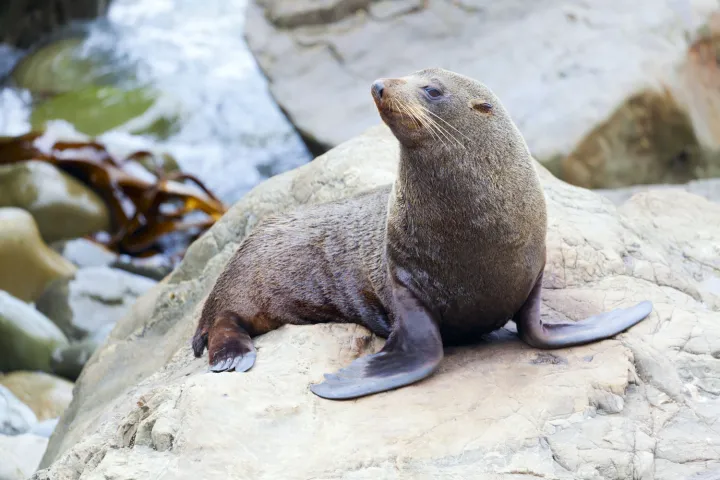
The motion of the sea lion flipper makes for a highly efficient propulsion system. The flippers work in tandem in a way that is similar to a human breast stroke. When swimming, the sea lion moves its flippers from its nose to its belly in one smooth stroke. This creates a jet that pushes the sea lion forward. The motion of the stroke down the body is so efficient that the animal doesn’t need to constantly paddle. It can move long distances by repeatedly flapping and then coasting.
Motion plays an important role in sea lion movement, but the shape of the sea lion flipper also contributes significantly to its aquatic efficiency. Unlike other mammals that have rounded flippers, the sea lion’s flippers are undulated. This wave-like shape is thought to optimize the thrust of the stroke by causing water to flow uniformly over the end of the flipper. It’s a unique design that Leftwich wants to duplicate.
To accurately mirror the shape of the flipper, Leftwich and her team examined 21 spots on the sea lion flipper using scanning electron microscopy. They also identified a range of different textures that varied based on their position on the flipper. “The leading edge has these thick, scaly patches of skin and not much hair,” Leftwich said. “And the trailing edge has no hair at all, and all of the grooves go toward the end. They’re very fine wrinkles in one direction.” Leftwich believes these textures and their precise location contribute significantly to the sea lion’s ability to grip the water and push its way through it.
To put her theory to the test, Leftwich used 3D printing to design a man-made version of the sea lion flipper. The researchers used silicone for the flipper material and outfitted it with robotic parts to provide motion. Underwater motion-traction studies allowed them to measure the thrust and drag of the flipper as it moved. As they make improvements, 3D printing makes it easy for them to tweak their design and test it again with minimal delay between trials. The team expects to test their flippers and collect data through the end of they year.
Leftwich hopes to adapt this 3D-printed flipper for use on mid-sized underwater vehicles. The animal-like flippers would provide these vehicles with maneuverability, which is a feature lacking in most propeller-powered submersibles. And unlike a propeller that leaves a discernible wake, the sea lion-inspired flipper also is virtually silent in the water. In the long run, it could pave the way for the development of “hydrodynamically quiet” autonomous underwater vehicles.



